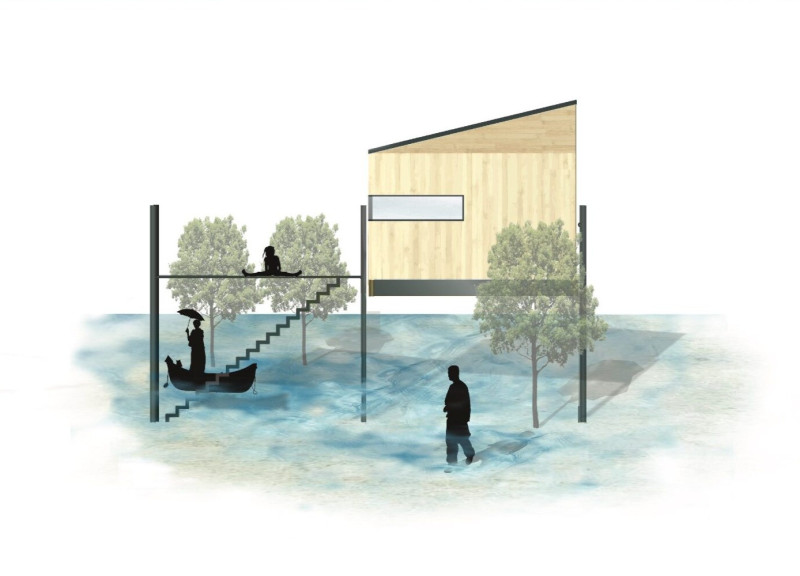5 key facts about this project
The design addresses the pressing issues related to climate change in Vietnam, where urban populations living in low-lying deltas face significant risks from flooding. This microhome serves as a housing solution tailored for low-income families, focusing on adaptability within a challenging geographical environment. The concept emphasizes practical living spaces while fostering community connections and promoting sustainability.
Design Concept
A key feature of the microhome is the pulley system that allows residents to elevate the structure when flooding occurs. This aspect provides a direct response to the necessity for quick adjustments in natural disaster situations. The organization of space within the microhome is efficient and functional, accommodating the needs of young professionals. It includes essential areas such as storage, a kitchen, a bathroom, a multipurpose workspace, and a lofted bedroom.
Materials and Structure
Materials for the microhome are selected for their practicality and environmental impact. Bamboo panels are used due to their lightweight and sustainable characteristics. The structure is supported by a steel frame and pole system, offering durability to withstand harsh weather. Photovoltaic glass is integrated to enhance energy efficiency, making the home responsive to external environmental conditions. Steel cables support the pulley mechanism, ensuring the microhome remains adaptable during flooding.
Community Interaction
The design encourages engagement with the surrounding environment by incorporating shared outdoor areas. These spaces promote social interactions among residents, which is vital in densely populated urban settings. By providing areas for communal gatherings, the microhome supports both individual wellbeing and community cohesion, addressing the needs of vulnerable populations effectively.
The microhome’s functional pulley system exemplifies a practical means of flood management while maintaining a straightforward and efficient appearance that aligns with its setting.






















































